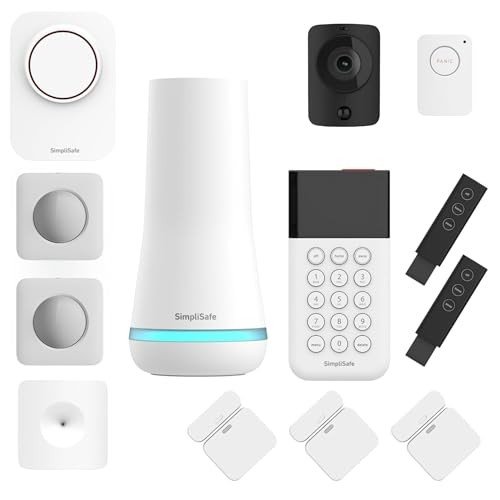Shop Lighting UK: Illuminating the Retail Experience
In the ever-evolving world of retail, the importance of shop lighting can not be overstated. It not only enhances the aesthetic appeal of products however also affects client habits, their mood, and the general shopping environment. With improvements in technology and style, shop owners in the UK have a myriad of options to choose from when it emerges solutions. This post will check out the types of lighting offered, their advantages, and factors to consider for creating the best ambiance in a retail space.
Value of Proper Shop Lighting
Reliable shop lighting plays an essential role in consumer experience and can substantially impact sales. Here are some key reasons that adequate lighting is necessary for retail environments:
- Highlighting Products: Good lighting accentuates products, making them more attractive to customers.
- Creating Atmosphere: The ideal lighting can set the mood and stimulate emotions, affecting acquiring decisions.
- Enhancing Safety: Well-lit shops are much safer, assisting consumers browse without threat of tripping or mishaps.
- Improving Visual Merchandising: Proper lighting can boost displays, making them dynamic and appealing.
Types of Shop Lighting
Shop owners can select from various kinds of lighting, each serving various purposes, including ambient, job, accent, and decorative lighting. Here's a breakdown of each type:
| Type of Lighting | Description | Finest Uses |
|---|---|---|
| Ambient Lighting | Provides general lighting to the space. | General retail areas like shops and grocery stores. |
| Task Lighting | Focuses on specific locations to enhance presence for tasks. | Checkout counters and fitting spaces. |
| Accent Lighting | Emphasizes specific items or displays, creating a centerpiece. | Display cases, art, or advertising items. |
| Decorative Lighting | Adds aesthetic appeal and improves the general decoration. | Chandeliers and special fixtures in high-end stores. |
1. Ambient Lighting
Ambient lighting is the foundational illumination within a shop. It fills the entire area, ensuring that consumers can see and browse conveniently. Merchants should consider utilizing LED panels or ceiling-mounted fixtures, as they provide energy efficiency and excellent light circulation.
2. Job Lighting
Task lighting is essential for locations where specific activities occur, such as checkout counters or workstations. Shop owners can install under-cabinet lighting or track lights to focus lighting on these locations, improving the convenience and experience for both personnel and consumers.
3. Accent Lighting
Accent lighting helps accentuate specific products or functions within the store. This type of lighting can be accomplished through spotlights, track lights, or strategically positioned wall-mounted fixtures. It is particularly efficient for showcasing included items, marketing screens, or artwork, guiding customer focus where it's most required.
4. Decorative Lighting
Beyond functionality, decorative lighting aspects add design and character to a retail space. Unique fixtures, such as pendant lights or extra-large chandeliers, can develop an unforgettable environment, particularly in shops or high-end merchants. These statement pieces not just illuminate but also enhance the shop's branding and aesthetic appeal.
Selecting the Right Lighting for Your Shop
When choosing lighting for a retail environment, shop owners need to think about the following aspects:
- Store Type: Different types of retail need varying lighting options. A fashion jewelry store might need softer, more concentrated lights, while a grocery store might need brighter ambient lighting.
- Color Temperature: The color of light can impact the understanding of products. Warm lights (under 3000K) create a comfortable feel, while cool lights (above 3000K) can make a space feel more contemporary.
- Energy Efficiency: The usage of LED lighting not only conserves energy however also reduces costs gradually.
- Versatility: Install dimmers or adjustable fixtures to adjust lighting for different celebrations or seasonal modifications.
The Future of Shop Lighting
As technology advances, shop lighting is becoming significantly sophisticated. Here are some patterns shaping the future of retail lighting in the UK:
- Smart Lighting Solutions: Integrated technology permits for push-button control and automation of lighting systems by means of smart devices or home assistants.
- Sustainable Lighting: There is a growing emphasis on environment-friendly solutions, with sellers selecting products that minimize environmental effect.
- Focal Point Lighting: Retailers are increasingly utilizing lighting to create specific focal points that direct consumer traffic and improve product screens.
Frequently Asked Questions about Shop Lighting in the UK
Q: What is the very best type of lighting for a clothing store?A: A combination of
ambient and accent lighting is usually best. Ambient lighting is needed for general presence, while accent lighting can help highlight essential pieces or collections. Q: How can I make my shop lighting more energy-efficient? A: Consider using LED lights, setting up motion sensors, or incorporating
dimmers. This reduces energy consumption and costs in the long run. Q: Should I use natural light in my shop?A: Yes, using natural light can enhance customer experience whileminimizing energy costs. Nevertheless, it is very important to balance natural light with artificial lighting, specifically on cloudy days. Q: How typically should I replace my shop's lighting fixtures?A: This depends on the kind of fixtures used. LED lights can last approximately 25,000 hours, while traditional bulbs
may need to be changed more frequently. Routine upkeep checks are suggested. In a progressively competitive retail environment, shop lighting plays a vital role in forming consumer experiences and driving sales. Buy Track Lighting UK in the UK have a broad variety of alternatives and innovations at their disposal to produce the best ambiance. By understanding the importance of the various types of lighting and how to implement them effectively, shop owners can improve their area, making shopping more enjoyable for consumers while increasing their bottom line.

